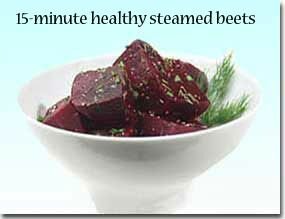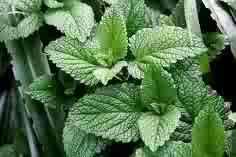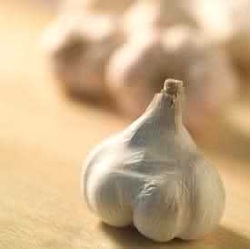"Allevato con la scotta il dottore e in bancarotta." Which translates into English "If everyone were raised on whey, doctors would be bankrupt.” - expression from Italy regarding the benefits of whey (circa 1777).

Whey is the liquid left behind when separating curds from fermenting milk, yogurt, kefir or other cultured dairy products, and is a nourishing food in its own right!
Whey, called "healing water" by the ancient Greeks, is filled with nourishing probiotic (pro-life) activity, protein, healing fats, vitamins, and minerals (particularly potassium) and is an excellent digestive aid, yet lacks lactose. In reference to its living friendly bacteria, Sally Fallon, author of Nourishing Traditions, explains: “These friendly creatures and their by-products keep pathogens at bay, guard against infectious illness, and aid in the fullest possible digestion of all food we consume.”
This healing water will encourage repair of gut dysbiosis – a condition that is more and more common in today’s world and is an underlying cause of numerous, now common “diseases” from allergies to candidiasis to autism.
SO LETS GET STARTED.... THE EASY WAY TO MAKE WHEY!
Makes about 2 pints
Making Whey With Yogurt or Kefir
Ingredients:
Yogurt or kefir (2 cups) — (Whole Foods sells organic Kefir and Yogurt)
Equipment:
Strainer
Clean cheesecloth, or clean butter muslin or a tightly woven, non terrycloth dishtowel
Clean cheesecloth, or clean butter muslin or a tightly woven, non terrycloth dishtowel
Directions:
1. Set a large steel mesh strainer in a large glass or plastic bowl or pitcher (do not use metal) and line it with some cheesecloth, butter muslin or a very thin dishtowel (if you use a thick one, it will soak up too much of the liquid)
2. Transfer the yogurt or kefir into the strainer.
3. Let it drip for a few hours. When the dripping slows, tie the cheesecloth or towel to a wooden spoon (or any big spoon) and place the spoon on top of the pitcher to where the towel of yogurt is hanging suspended in the pitcher from the spoon. You can also tie the cheesecloth to a cupboard handle and let it drip into the bowl below.
4. Let it drip overnight.
5. When it is has completely stopped dripping, pour the the liquid whey that dripped into the bowl or pitcher into a clean glass mason jar and store in the fridge. It will keep for about 6 months.
6. The white creamy stuff in the towel is cream cheese, and can be used in recipes or spread on toast. It will last a few weeks to a month in the fridge.
How to Make Whey With Raw Milk
Ingredients:
Raw milk (2 quarts) — *see where to buy milk below.
----*Whole foods also carries Straus Milk which is the next best thing to raw milk as it is pasteurized using the HTST method.
Raw milk (2 quarts) — *see where to buy milk below.
----*Whole foods also carries Straus Milk which is the next best thing to raw milk as it is pasteurized using the HTST method.
(don’t try this with ultra pasteurized found in most grocery stores!).
1. Place 2 quarts of the milk in a glass jar, bowl or pitcher and leave at room temperature for 2-4 days until the milk separates into curds and whey.
2. Pour into the strainer lined with cheesecloth. Follow instructions above.
Want to make something now, with all that Whey that you just made?
Make ricotta. Just take the whey and heat it to 200 degrees F plus. If your whey is acidic enough, little specs of the albumen will start to precipitate out once it gets to around 200. If this does not happen, add a tablespoon or two of white vinegar. Once the albumen starts to separate, maintain the heat for a few minutes so it all has time to set up, then pour through a very fine cheese cloth. In a pinch, you could use papertowels in a colander to drain it. It usually takes several hours, if not overnight, to drain completely.
Salt if you like, then use it however you like.
You can save the leftover liquid to water plants with (use it with acid loving plants), or your dogs would love it on their next meal!
1. Drink it- straight, mixed with tea, a smoothie or fermented beverage
2. Freeze it into cubes and add to smoothies
3. Replace a portion of the water used to cook grains- a great way to infuse more minerals into the dish
4. Soak your legumes in it to improve digestibility (1 tablespoon for every 1-cup of water as recommended by “Nourishing Traditions, by Sally Fallon”)
5. Lacto ferment fruits and vegetables - see Sally Fallon's "Nourishing Traditions" or "Wild Fermentation" by Sandor Ellix Katz for instructions
6. Make it into cheese!
7. Feed to your pets
8. Use whey to pickle
9. Substitute for raw vinegar in sauces.
10. Mix whey with 5 parts water and feed your plants - indoor or outdoor.
8. Use whey to pickle
9. Substitute for raw vinegar in sauces.
10. Mix whey with 5 parts water and feed your plants - indoor or outdoor.
and... one more simple way to enjoy Whey:
Where to buy raw milk in Arizona
- Benson/Pomerene (45 mi E of Tucson ): Fiore di Capra, "Flower of the Goat," Alethea and Michael Swift, Phone: (520) 586-2081, E-mail: altrece@q.com, Web:http://www.goatmilkandcheese.com (dairy) and http://www.altrece.com (farm). Arizona's only Grade A goat dairy and creamery located 45 miles SE of Tucson in Pomerene, AZ. They ship raw goat milk via UPS Ground service throughout Arizona. They sell a variety of goat cheeses and raw goat milk in 1/2 gallon bottles at the Tucson St. Phillip's Plaza Farmers Market on Sundays. On-site sales available (please phone to coordinate). Handmade goat's milk soaps and lotions also available. Visit the farm website to view the farm and animals. Sign up for e-mail list. Telephone calls and questions are welcome.
- Colorado City: Meadowayne Dairy, Terrill Johnson, 385 Juniper St, Colorado City AZ 86021, Phone: (928) 875-2568, Email: meadowaynedairy@gmail.com , Web:http://www.meadowayne.net. State-certified raw milk, cream, and several kinds of raw cheese, plus cottage cheese and squeaky cheese curds.
- Fountain Hills/Scottsdale/Phoenix area: Chubby Cheeks Farms, Aunt Z, E-mail: chubbycheeks@gmail.com, Web: http://naturopathicfood.com/?p=43. Beyond organic practices results in a very high butterfat content and heavenly milk. Cow and goat dairy is available, and current pick up is in Fountain Hills, but with demand anywhere in the surrounding area can become a drop off point. Best way to contact is by emailing your name and number to the address above. Website above gives more details, but actual farm site is currently under construction.
- Queen Creek (SE of Phoenix): Save Your Dairy, Jackie Calamos, Phone: (480) 279-4474, Web: http://saveyourdairy.com. They are a small, Grade A dairy, licensed by the state of Arizona. They produce, bottle and distribute only raw cow's milk throughout the state. They are committed to the education of their employees and consumers regarding the health benefits of raw milk. Currently located at the NW corner of Higley & Riggs, but need to find a new home very soon, as a shopping center will be built on the land they lease. Anyone knowing of a small dairy for sale, or acreage to lease or purchase, please contact Owner Jackie Calamos through the website or phone listed above.
- NW Tucson/Marana: Hoofs 'n Horns, Shelby Brawley, Email: shelby.hoofsnhorns@yahoo.com , Web: http://www.hoofsnhorns.com. Small mother/daughter farm animal rescue. Milk is not sold or distributed, members pick up at the farm, groups available to rotate all over town, mainly full cream Jersey or Holstein cow milk, some goats milk available year round.
- South-West of Phoenix: Email: justamorgan@live.com. Small family owned operation with La Mancha Dairy Goats, horses, pony, sheep, and chickens. Milk is not sold or distributed. Currently under Arizona Law they are only allowed to sell milk for pet food use only. AZ Dept. Of Ag. Environmental Services Division License No. 3657.
- Tucson: Hoofs 'n Horns, Shelby Brawley, Tucson AZ, Email: shelby.hoofsnhorns@yahoo.com , Web: http://www.hoofsnhorns.com. Cow and goat milk shares.










